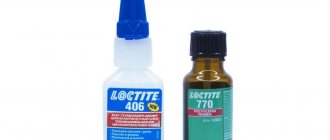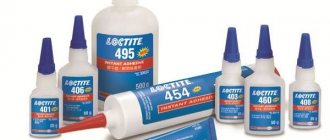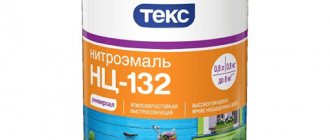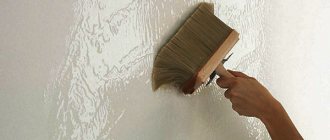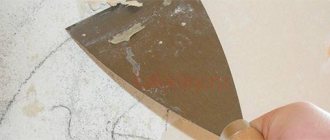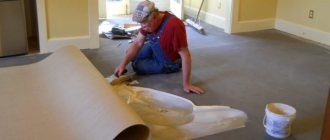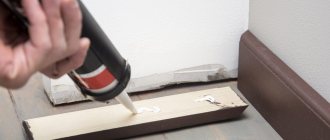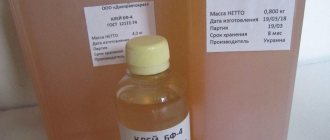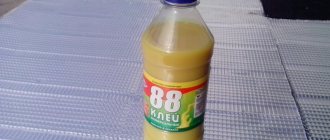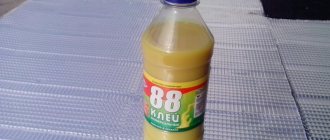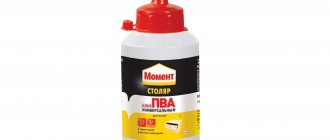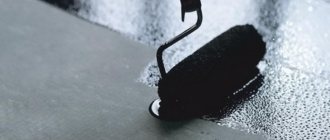In the construction industry, the use of some materials is invisible to the average person, but they play an important role in obtaining a high-quality result. One of these is glue. The properties of modern compositions make it possible to use them for gluing a wide variety of surfaces. Next, we will look at a reliable branded product - Loctite glue.
Loctite glue
Let's look at the existing types, features, advantages, and provide photos and videos on proper use.
Loctite glue
Varieties of adhesives from a leading German manufacturer
The products of the German concern Henkel Group, which occupies a leading position not only in the domestic but also in the world market, are widely represented in Russia.
Henkel Group's line of Loctite adhesives includes a wide range of products with very different formulations - from cyanoacrylate, acrylic, polyurethane to epoxy, butyl and ultraviolet curing.
Loctite adhesives with an organic and inorganic base, single- and multi-component, as a rule, have a wide range of applications and can glue various types of homogeneous and dissimilar materials.
You can select Loctite glue and view the full range of products on the website loctite.masterkley.ru/catalogue/klei/.
Equipment
Finally, we also note the equipment produced by the Loctite company for gluing different parts. Sometimes it is enough to use a tube for the procedure, but for most production tasks this is not enough. Then special dosing of the composition is used using automatic equipment.
It is worth noting that the company offers not only ready-made solutions. The company can develop and create equipment taking into account individual requirements. In the reviews, consumers highly appreciated the quality of the proposed solutions.
Additionally, you can watch a video with tips on applying Loctite adhesives.
Loctite adhesives
Currently, many technologies for manufacturing parts and assemblies in the automotive, mechanical engineering, aerospace, defense and other industrial sectors involve the use of various types of adhesives. In addition, adhesives are widely used to perform repair work in industrial conditions and at home.
Modern adhesives can reliably bond not only cardboard, paper, leather and wood, but also materials such as rubber, glass, ceramics, plastics and metals.
They produce adhesives for both universal use and unidirectional ones - for joining only wood, metals, leather, and so on.
About the brand
The company demonstrates an integrated approach:
- technical specialists and sales representatives provide 24/7 assistance;
- certified methods of production and testing of products are provided;
- advanced training programs for specialists have been developed and implemented so that distributors have the necessary knowledge and skills for selecting and using products;
- New standards in the field of occupational safety and health are being applied.
In addition to the Loctite brand, Henkel offers the Teroson and Bonderite brands, known throughout the world for their high reliability.
Next, let's look at Loctite products in more detail: what options the manufacturer offers.
How to remove BF glue
The medical version of the glue dissolves on its own within 2-3 days. Or the elastic film can be easily removed if you pick it up on one side and gently pull it up.
To remove technical compounds, you can use a mechanical method (if the surface allows). If there is a risk of damaging the surface, use alcohol or acetone-containing liquids.
To do this, moisten the cloth with alcohol or acetone and apply liberally to the area of the adhesive stain. Leave for 20–30 minutes. Then apply solvent again and carefully clean off with a rubber spatula or flat plastic piece.
Shaft-bushing compositions
This option is suitable for rigid fit of shafts, bearings, bushings. The sealant is applied to the part, after which it sits firmly in the prepared place without moving.
- The load-bearing capacity of the part increases and the load is evenly distributed.
- The sealant can fill any gap and reliably protects the surface from corrosion.
- The composition becomes durable within 15 minutes after application.
Brief description of the brand
Loctite is a brand with extensive experience in producing effective adhesives. Among the assortment of this company you can find adhesives for almost all materials existing today.
Their use opens up unique opportunities for humans in the field of joining difficult-to-glue materials.
Combining excellent performance characteristics and affordability, loctite adhesives have become very popular in the domestic market. They provide reliable and fast bonding of a wide range of different materials: metal, plastic, elastomers, rubber, porcelain, etc. In addition, they do an excellent job with wooden, leather or textile products.
Loctite glue
For maximum effectiveness of the substance, the surfaces to be bonded will need to be cleaned and degreased using special products. And excess glue is removed using nitromethane or acetone.
Application rules
Even before using sealing compounds, the surface must be cleaned of traces of oils, carbon deposits and remnants of previous seals. To achieve a completely clean surface, it is better to use special products from the same brand.
The algorithm for applying sealant will be the following procedure:
- Cleaning the parts to be joined.
- Refilling the cartridge into the gun;
- Squeeze out the gel in an even layer.
- Tight pressing of elements.
- Removing excess sealant.
When using a syringe, the composition is already ready for use. It is better to use a semi-automatic pistol in professional services, but in a garage, the “good old” one, that is, manual operation, is quite suitable.
Features of the use of Loctite adhesives
High bonding speed is a distinctive feature of polymerizing instant adhesives based on cyanoacrylates.
In applications that require resistance to high loads, it is advisable to use epoxy and acrylic adhesives, which provide high bond strength.
Also, a strong connection with little elasticity and filling of large gaps can be obtained using polyurethane compounds.
To smooth out dynamic loads, it is recommended to use adhesives containing silicone.
Polymer adhesives make it possible to obtain elastomers that firmly bond to any materials and excellently resist the negative influence of the environment.
Adhesives containing butyl rubber are capable of demonstrating excellent ductility even at low temperatures and reliably bonding to many types of materials.
For industrial assembly processes, multipurpose structural adhesives are indispensable because they can provide a combination of quite different properties.
Transparent adhesives with UV polymerization can significantly speed up the technological processes of joining parts. Their use has a positive effect on reducing the cost of the process.
Variety of types of adhesives
The company's arsenal includes not only glue and various adhesives. The brand produces technical compounds that provide protection and support the functioning of mobile devices.
Screw sealing
Such products are available in the form of liquid solutions. Also on sale are tapes that provide sealing of screw connections. These substances get into the space between the threads, forming an impermeable layer. Loctite sealants help prevent fittings from coming loose. They prevent leakage of technical substances. Screw sealants have the following characteristics:
- withstand prolonged exposure to high or low pressure;
- do not crack during temperature fluctuations;
- have excellent adhesive characteristics, allowing metal and plastic to be attached;
- are produced in the form of one-component solutions or sealing tape;
- do not shrink;
- provide protection against corrosion;
- are not subject to dissolution by alkalis, gasoline and oils.
See also
50 types of glue for eyelash extensions, which one is better to choose
Flanged sealing
When applied, such substances polymerize, forming a sealed seam between the elements. It appears in the gaps between parts. Such products protect devices from liquid leaks. They also allow you to avoid losses of technical gases. In addition to the sealing layer, the substances create a coating that protects the surface from corrosion.
The following features are characteristic of flanged substances:
- do not react to the influence of reagents and technical gases;
- do not crack under significant temperature fluctuations;
- do not suffer from pressure fluctuations;
- are produced in the form of silicone and anaerobic solutions;
- are not subject to shrinkage and expansion;
- anaerobic compounds provide rigid adhesion, silicone compounds are used for moving elements;
- due to its liquid consistency, it fills microscopic holes and cracks, independently distributing over surfaces;
- do not require additional tightening of the thread;
- help replace gaskets made of other materials.
Elastic industrial seals
Such means help protect the elements of mechanisms from the influence of harmful factors. They protect parts from high humidity, air, and gases. The substances also protect against solid elements.
The use of these agents helps to form a movable seam that is resistant to tearing or displacement.
The following features are characteristic of such funds:
- in case of deformation, the seals restore their shape;
- are produced in the form of one- or two-component liquids;
- have excellent adhesion to different materials - they may differ in density or texture;
- do not crack at low temperatures;
- are not subject to destruction by water, ultraviolet radiation, or exposure to air;
- are characterized by high vapor permeability.
Instructions for use
Depending on the characteristics, different types of adhesives have their own application characteristics. There are two application options:
Thermal method for solutions BF-19, 2, 4, 2N, 4N – clean the surfaces, degrease them (sand them with sandpaper if necessary). Apply a 3–5 mm layer of glue. Allow time for initial setting (about 1 hour). We tightly compress the two parts with the adhesive layer and heat them to 120–135˚C for 50–70 minutes. Cool at a temperature of 18–23˚С.
For BF-88, the heating temperature is up to 90˚C for 30 minutes.
- Instructions for use using the cold method are the same for all brands of glue. Apply a layer of glue to the prepared surfaces and let it soak for 20–30 minutes. Then we apply another layer 2–3 mm thick, fix the elements together and leave for 24 hours until complete adhesion.
- BF-6 - applied to a dry area of skin when the bleeding has stopped. The damaged area and the skin around it (1–2 mm) are covered with a 2 mm thick layer of glue and allowed to dry completely.
We recommend videos on the topic:
Mode of application
All adhesives are as simple as possible to use:
- Degrease both surfaces. To do this, it is recommended to use a special cleaner Loctite 7063 , but improvised means are also acceptable: vodka, cologne, alcohol, gasoline.
- Apply a small amount of glue to one of the surfaces. If there is an excess, the setting and hardening time significantly increases, so it is better to follow the instructions.
- Press the materials to be glued together for a few seconds (from 2 to 10 - depending on the glue used). The seam gains maximum strength after an average of 24 hours.
TipOne-component adhesives are always ready to use. Two-component ones have a long service life, but require preliminary preparation - they should be mixed in a certain proportion specified in the instructions.
Loctite is not a cheap glue, which stops many amateur craftsmen. Professionals prefer it: it is convenient and reliable. If you intend to use glue periodically, you should choose a higher quality material. For an occasional situation, it makes sense to find a simpler glue.
Instant lineups
Super glue Loctite quickly polymerizes in a small gap between the bonded surfaces. The composition is used to create a strong connection between small elements. The material may be different. Instant formulations can be supplied in gel or liquid form.
There are a sufficient number of varieties of Loctite adhesives that can be used under different application conditions, loads and gap sizes. The compounds have strong adhesion to a variety of materials, creating a strong connection.
Advantages of instant compositions:
- easy application;
- no solvents in the composition;
- with small surface contact areas, high strength is ensured;
- you can connect dissimilar surfaces;
- sets quickly.
Next, we will look at typical samples, provide markings and photos.
401
Loctite 401 adhesive is a universal solution with low viscosity. The composition is able to retain its properties even at a temperature of 120 degrees. Can be used for:
- porous coatings: cork, fabric, paper, wood;
- acid surfaces: galvanized, chrome plated.
The glue sets in 3-10 seconds. It has no color and is transparent. Supplied in packages of 20, 50 and 500 g. Viscosity is 100 MPa.
406
The composition is used for working with rubber and plastic. Loctite 406 glue provides instant bonding. You can use a proprietary primer first to improve adhesion to the surface. The composition can withstand temperatures of plus 120 and minus 40 degrees.
A setting time of 2 to 10 seconds is provided. Supplied in packages of 20, 50, 500 g.
414
The technical characteristics of this glue are almost identical to previous formulations. The difference is only in a few parameters. For example, the maximum temperature that glue 414 can withstand is plus 80 degrees. In this case, the viscosity is 90 MPa.
496
This is Loctite adhesive for metal. It is characterized by a longer setting time - from 10 to 30 seconds. At the same time, its viscosity is increased - 120 MPa. Reviews confirm that the composition does not lose its properties even at a temperature of plus 80.
EPO electro +7 985 768-22-67. +7 926 424-06-20
Description Loctite 401 is a fast-curing, one-component, low-viscosity cyanoacrylate adhesive. Designed for materials that are difficult to bond. Curing rate is less affected by surface moisture than other standard CA grades.
| product | Loctite 401 |
| Chem. the basis | ethyl |
| Viscosity mPa.S | 100 |
| Color*** | b/p |
| Setting time | 3-10 sec. |
| Plastics/Polyolefins | +/+** |
| Rubbers | + |
| Metals | + |
| Porous and/or acidic surfaces | ++ |
| Temperature range C | from -40 to +120 |
| Packing (g) | 20,50,500 |
| A comment | universal, low viscosity |
Scope of application Loctite 401: Quick bonding of a wide range of materials: metals, plastics, elastomers. Bonds well to porous materials or absorbents, such as wood, paper, leather or fabric.
Consumption of Loctite 401 glue: One drop of glue covers (when compressing two surfaces to be glued) a circle with a diameter of about 2.5 cm. One gram of glue contains 25-35 freely falling drops.
Instructions for use Loctite 401:
- Clean the bonding surfaces with Loctite 7063.
- Apply glue sparingly to one surface.
- Best gluing results are achieved at room temperature
- Excess adhesive will prolong curing time and affect bond strength.
- Connect the surfaces to be glued and fix for 5 - 10 seconds.
- The final strength of the connection is achieved within 24 hours.
Precautionary measures:
- Rinse sticky fingers with warm water.
- After some time, the subcutaneous fat itself will reject the glue.
- In case of contact with eyes, rinse immediately with plenty of water and consult a doctor.
Helpful tips when using Loctite instant adhesives:
- Loctite instant adhesives are at their best only on dry and clean surfaces. All dirt, grease and foreign matter should be removed with Loctite 7063 or Loctite 7061.
- As a rule, the larger the bonding area, the higher the strength of the joint.
- Always wipe the spout of the glue container after use.
- Precise amounts of Loctite adhesive can be applied using a variety of dispensing nozzles.
- The best joint is obtained by applying the minimum amount of adhesive required to fill the joint.
- The thinner the adhesive seam, the stronger the connection and the higher the rate of polymerization of the glue.
- When gluing plastics, it is necessary to determine the type of material. Typically, if the plastic floats in water, it is a polyolefin, such as polyethylene or polypropylene. In this case, you will need Loctite 406 and Loctite 770 primer.
Notes:
- ***: b-white, p-transparent, h-black
- ++: recommended for use
- +: possible use
- **: with primer Loctite 770 or Loctite 7239
- Med: ISO 10993 certified for medical device applications
Applications and characteristics
Different brands of BF glue cover the needs for the use of adhesive components in completely different areas:
- Shipbuilding. Connecting parts in the construction of ships and aircraft structures made of wood.
- Industry. Fixing ferrous and non-ferrous metals to each other, fastening metals with polymer components.
- In everyday life: repair, restoration of objects made of glass, plastic, ceramics, fabric, wood. In creativity for creating plastic, wooden models, working on leather, fabric.
- In medicine: stopping bleeding, blocking wounds, fixing dental structures.
- Beauty. For fixing false nails or artificial curls.
Butyral Phenolic glue is a universal composition and has the following technical characteristics:
- A one-component material, it can polymerize both under the influence of heat and upon drying.
- Consistency: thick translucent liquid from light yellow to brown, dark brown.
- Creates elastic seams when dry.
- Resistant to UV rays, oils, gasoline, corrosion. The substance does not dissolve in water and does not rot.
- It is heat resistant up to +180˚С.
All phenolic adhesive formulations are flammable. They must not be used near open flame sources.
What is Loctite sealant?
The manufacturer Henkel began producing sealants starting in 1997. During this period, specialists have developed a number of innovative technologies and today the brand’s sealants are created using modern formulas.
Among the advantages of Loctite products it is necessary to highlight:
- Excellent performance of the sealant when compared with seals and gaskets;
- Extending the service life of a unit or part;
- High level of adhesion with alloys - such as steel, aluminum, cast iron, as well as with plastic products;
- Short curing period;
- Fast polymerization;
- Comfort of application.
Using Loctite sealants instead of traditional gaskets, you can reliably protect parts from possible leaks and distribute the load on individual components and mechanisms.
The compositions and properties are superior even to seams created by a welder; they are more effective than pressing.
Varieties
Depending on the intended use and chemical composition, the following types of adhesive components are distinguished:
BF-2
This solution is used for minor and major repairs and installation of elements made of natural stone, non-plastic metals, plastic, ceramics, and wood.
Of all the varieties, BF 2 glue creates the least elastic seam. Therefore, it is applied to surfaces that are shear-resistant and do not deform.
The solution polymerizes quickly, but for application its temperature must be at least 20˚C.
The solution is recommended for use in bathrooms and saunas, as it is not susceptible to chemicals, mold and fungal deposits.
BF-4
The substance is used to create models, in applied arts - for crafts made of ceramics, leather, fabric, wood, and plastic. BF 4 glue is resistant to chemically aggressive solutions and temperature changes from -55 to + 160˚C. Therefore, it is suitable for repairing industrial equipment, mechanisms, and reagent tanks.
The composition creates a particularly strong seam when heated to + 160˚C or dried during the day. BF-4 glue differs from BF-2 in greater elasticity, but less heat resistance.
BF-2N and BF-4N
In terms of their properties, BF-2N and 4N are similar to brands 2N and 4N and can replace each other. The only difference is that BF 4 contains polyvinyl acetate resin. This component ensures the formation of a more elastic seam. When connecting parts subject to deformation, vibration loads or shear, it is preferable to use grade 4H.
Types marked “H” according to industry standards are intended for working with ferrous metals. Without “H” marking for working with non-ferrous metals.
BF-88
It has a wide range of applications in everyday life and industry. Due to its moisture resistance and good penetration into the surface, it can be applied as a wall primer during repairs. The adhesive seam is elastic and can withstand changes from -30 to +70˚С.
Non-toxic, therefore suitable for closed, unheated rooms. Connects parts made of rubber, leather, metal, plastic, wood, glass, ceramics, stone. With the help of the BF-88, they repair shoes, leather goods, restore ceramics and wooden objects. Curing occurs through both heat and drying.
BF-19
The glue is mainly available in standard tubes. Technical characteristics are similar to BF-2N and 4N. But it forms a more elastic and thin adhesive seam. Dries quickly and can polymerize when heated. When applied cold, it is suitable for gluing rubber, rubber, cardboard, leather and suede. With the thermal method, it creates a stronger adhesion and connects metals, wood, glass (including plexiglass), granite, and tiles. The seam does not crack or shrink.
Anaerobic compounds
Similar versions of sealants are used to create a sealing layer on various connections where there is a thread. Thanks to the use of compounds, automotive liquids and gases cannot pass through the elements to be sealed.
Anaerobic Loctite can withstand reduced pressure, and after polymerization is complete, severe impact.
The main features of such funds are:
- Easy application;
- No displacement or shrinkage;
- Possibility to replace conventional gaskets;
- Resistance to vibrations and shocks;
- Rust protection.
Such sealants set even in environments without air; they are applied only to previously cleaned, completely degreased surfaces. These compositions also include Loctite silicone sealants.
This sealant is suitable not only for metal products, but also for various types of plastic. Gel sealants are widely used today: 586, 577, 5400, etc. These products are selected for large as well as medium thread pitches.
